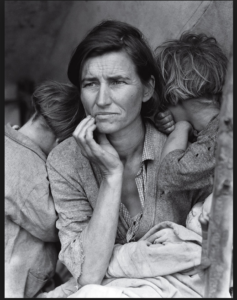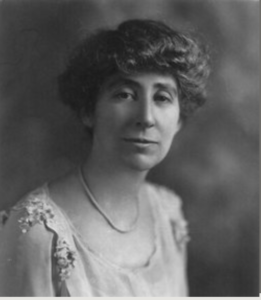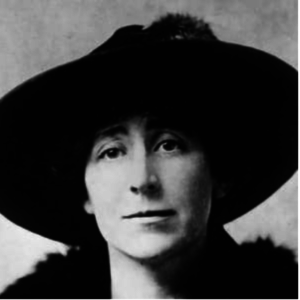My friend Tony Givens asked me how the heck I obtained the Y-DNA of my great-great-great-great grandfather Samuel Rankin, who I had identified as my ancestor via Y-DNA testing. Did we exhume his corpse, or what?
I was at a loss how to respond. The short and almost correct answer is that I obtained Samuel’s Y-DNA by persuading my cousin Butch Rankin to take a Y-DNA test. However, I knew that wouldn’t suffice. Instead, I fell back on standard cross-examination technique, asking leading questions to which I already knew the answer … hoping to answer Tony’s question without delivering an impenetrable lecture.
“So … Tony, you know who your Givens grandfather is, don’t you?”
“Sure,” he said, “his name was David Givens.”
“OK,” said I, “you know the name of David’s father, right?”
“Yep! Harland Givens was my great-grandfather.”
“Well, Tony, if you swab your cheek today for a Y-DNA test, what would you have?”
Tony looked nonplussed. “A sample of my Y-DNA?”
“Yes, indeed. You would also have the Y-DNA of Harland Givens, give or take a few markers.”
“Can’t be,” said Tony, “he’s been dead for a century.”
At that point, there was no alternative but to deliver a pseudo-scientific lecture about Y-DNA theory. A condensed form of the lecture follows. I am qualifying it as “pseudo”-scientific because I’m not a scientist and it is easy to oversimplify these matters …
I am female and therefore don’t have a Y chromosome. Instead, I have two X chromosomes. Tony, a male, has one X chromosome and one Y chromosome. The X and Y are called the “sex chromosomes” because they determine gender.[1] Tony can only have inherited his Y chromosome from his biological father, since his mother didn’t have one to pass on. Likewise, Tony’s father can only have inherited his Y chromosome from his father David, who can only have inherited his Y chromosome from his father Harland Givens, and so on, theoretically ad infinitum up the male Givens line. This ignores the possibility of a so-called “non-paternal event,” more on that shortly.
Those inherited Givens Y chromosomes are all identical, in theory. Putting it another way, a male’s Y chromosome is passed down from father to son for generation after generation — except for occasional random mutations. If there were no mutations, Tony’s Y chromosome would be an exact copy of the Y chromosome of all of his male Givens ancestors.
Thus, the almost correct answer to Tony’s original question was that I obtained my ancestor Samuel Rankin’s Y-DNA by getting my cousin Butch Rankin to Y-DNA test. That isn’t quite accurate because mutations have occurred in the intervening generations between Samuel and Butch. If there had been no mutations, then Butch’s Y chromosome would have exactly matched his five-great-grandfather Samuel’s Y chromosome.
There is an occasional “oops” in this process, when a man’s Y chromosome doesn’t match his apparent father’s. Genealogists call this a “non-paternal event,” and please don’t get me started on the weirdness of that label. For example, if a male child is adopted, the adopted son inherited his Y chromosome from his biological father. The adopted son would not be a Y-DNA match with his adopted father. Likewise, if Mrs. Givens were raped and bore a son as a result, the child’s Y chromosome would be a copy of the rapist’s, not a copy of Mr. Givens’. The same would be true if Mrs. Givens had a son as a result of an extramarital affair.
Except for so-called non-paternal events, the Y chromosome repeats in the line of the male surname without changes other than occasional random mutations. This has given rise to surname DNA projects, in which participants compare their Y-DNA to other men having the same surname. Women cannot Y-DNA test, since we have two X chromosomes but no Y chromosome. Instead, we cajole our fathers, brothers, sons, uncles and male cousins into swabbing their cheeks for a Y-DNA test.
There is a potload more science about this, but I’m already in over my head. If you want to learn about STRs (“short tandem repeats”) or SNPs (“single nucleotide polymorphisms”), check out FAQs at the FTDNA website. Better yet, go search Roberta Estes’s website, “DNAeXplained – Genetic Genealogy.” She does an excellent job making the science comprehensible.
Let’s leave the science and turn to how Y-DNA testing can be helpful in family history research.
As one example, it can help an adopted son identify his birth father when all other avenues have failed. I have one friend with a remarkable story who has done exactly that.
For another example, let’s assume that six men having the surname Willis have done 67-marker Y-DNA tests and joined the Willis DNA project. It turns out they are all a very good genetic match, having only one mismatching marker out of 67 between any two of them.[2] FYI, the number of mismatched markers is referred to as “Genetic Distance,” so any two of these men would be considered a “67-marker match, GD =1.”
Five of these men can trace their Willis ancestry with a high degree of confidence back to a John Willis who came to Maryland from the U.K. circa 1700. The sixth man cannot identify a Willis ancestor earlier than 1800. Fortunately, his extremely close genetic match to the other five men makes it a virtual certainty that they share a common ancestor fairly recently, three centuries being “fairly recent” in genetic time. He would be justified in concluding that he is probably also descended from John Willis of Maryland.
Y-DNA testing can also disprove relationships. That leads us to the famous Rankin legend inscribed on a bronze tablet in the Mt. Horeb Presbyterian Cemetery in Jefferson County, Tennessee. You can read the entire inscription concerning this piece of family lore in this article. The tablet says this in part, elided to focus on information relevant to this article:
“William Rankin had … sons, Adam [and] John … Adam married Mary Steele … [and] John … had two sons, Thomas and Richard, and eight daughters.”
If you are a Rankin researcher, you probably know that an Adam Rankin who died in Lancaster County, Pennsylvania in 1747 definitely married Mary Steele Alexander, widow of James Alexander. You also know that a John Rankin who died in Lancaster in 1749 left a will naming two sons, Thomas and Richard, and eight daughters.
In short, the Mt. Horeb tablet legend includes the belief that Adam Rankin (wife Mary Steele Alexander) and John Rankin (who had sons Richard and Thomas) of Lancaster were brothers. However, DNA is a fly in that ointment.
Six descendants of the John Rankin who died in Lancaster in 1749 have Y-DNA tested and belong to the Rankin Family DNA Project. They are a close genetic match. Their ancestry “paper trails” are solid. All six are descended from John’s son Thomas.[3]
The Rankin Project also has two participants who descend from Adam Rankin and Mary Steele. They are a 67-marker match with a GD = 5, which is not a very close match. The odds are only slightly better than even that they share a common ancestor within the last eight generations, about 200 years. One man’s “paper trail” back to Adam and Mary Steele Rankin is good as gold. The other man’s chart has one weak link in primary evidence, although it is established by convincing secondary and circumstantial evidence. It could be that these two men do not both descend from Adam and Mary, and, instead, their common ancestor is on the other side of the Atlantic. Having researched Adam’s line ad nauseam, I believe that is unlikely. Rather, those two men are almost certainly both descended from Adam and Mary Steele Rankin. Their five mismatched markers are evidently the result of random mutations in the male line after Adam.
In any event, the two men who (IMO) descend from Adam and Mary Steele Rankin are not a Y-DNA match with the six men who descend from John. A reasonable (perhaps inescapable) conclusion, based solely on DNA evidence, is that John and Adam Rankin of Lancaster were not brothers. Perhaps, you may say, they had different mothers? That theory won’t fly, because it doesn’t matter from whom John and Adam inherited their X chromosomes. We are dealing with Y chromosomes, and the Y-DNA of their descendants who have tested says that John d. 1749 and Adam d. 1747 did not have the same father.
This has implications further up the ancestral line. Both sets of descendants believe that their ancestor Adam or John was a son of a William Rankin, and that William was a son of an Alexander Rankin. Both claim the legend memorialized on the Mt. Horeb tablet.
Based on the limited genetic evidence available, they cannot both be correct. A puckish question: which line gets to claim the Mt. Horeb legend?
Evidence in actual records about Adam or John’s parents would be wonderful, but I don’t know anyone who has found any. Lacking “paper” evidence, we need to find another descendant of Adam and Mary Steele Rankin to Y-DNA test and confirm these tentative conclusions. We also need a descendant of John’s son Richard to test to help establish a Y-DNA profile for that important Rankin line.
Is there anyone reading this who has a male Rankin relative who hasn’t tested? For heaven’s sake, woman, throw him down on the floor and swab his cheek! Even if he isn’t descended from Adam and Mary Steele Rankin, or from John’s son Richard, the results of his test will almost certainly help him (and possibly others as well) learn more about his or her Rankin family history.
Seriously. Whatever your surname may be, if you are interested in your family history, consider purchasing a Y-DNA test (if you are a male) from FTDNA. For the record, I’m not on the FTDNA payroll, and it is the only testing firm that offers Y chromosome tests. Start with a 37-marker test. You can always upgrade to additional markers later without having to test again. If you have reservations, please contact me and let’s talk!
Meanwhile, I’ll be out there looking for another descendant of Adam and Mary … and a descendant of John’s son Richard …
See you on down the road.
Robin
[1] There is a spectrum of gender identity from male to female that involves questions beyond both the scope of this article and my expertise. I’m using “male” and “female” as though those are the only options, which is an oversimplification.
[2] A “marker” is a Short Tandem Repeat. I think. They get counted in a Y-DNA test.
[3] The Rankin DNA Project needs a descendant of John’s son Richard to Y-DNA test.














